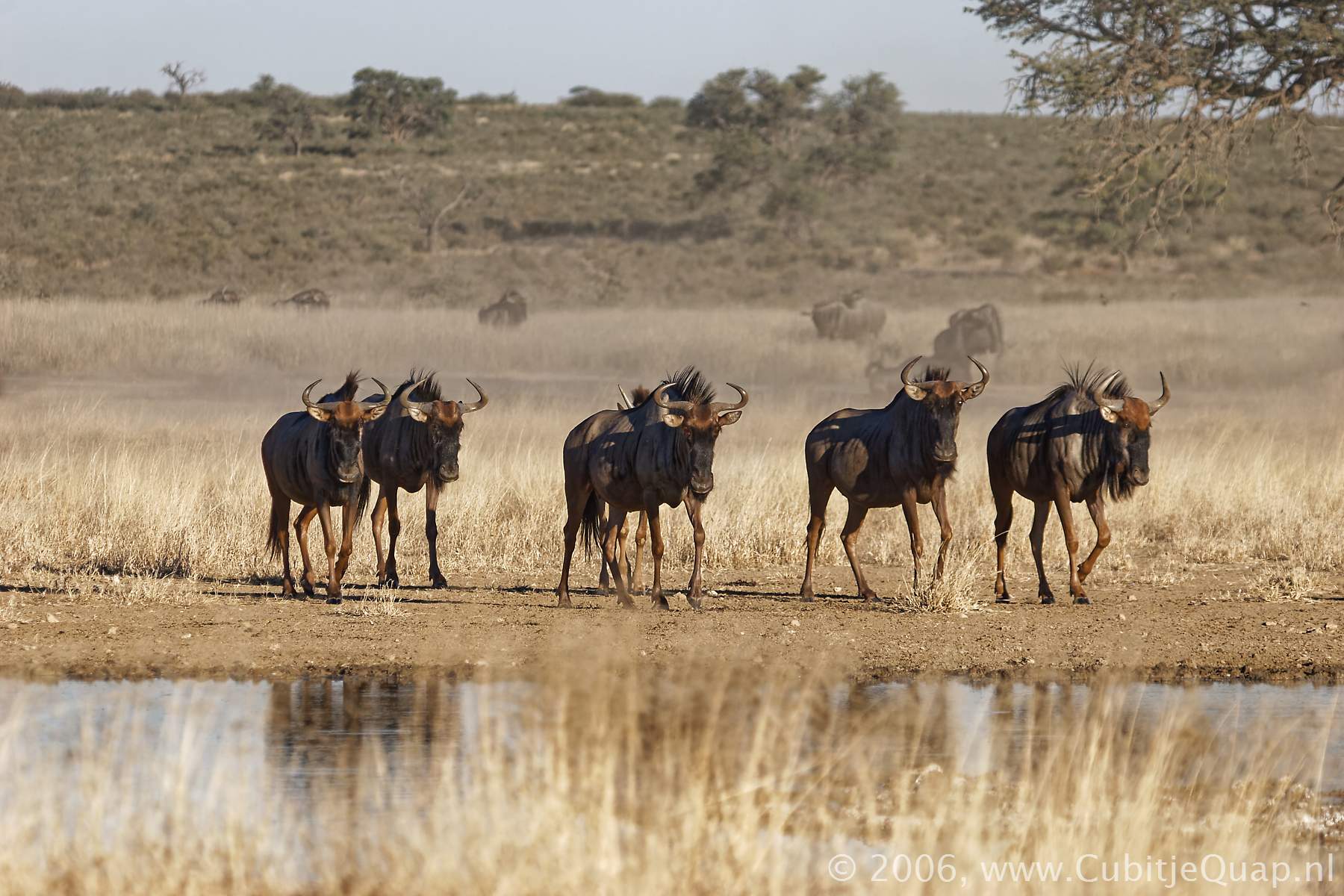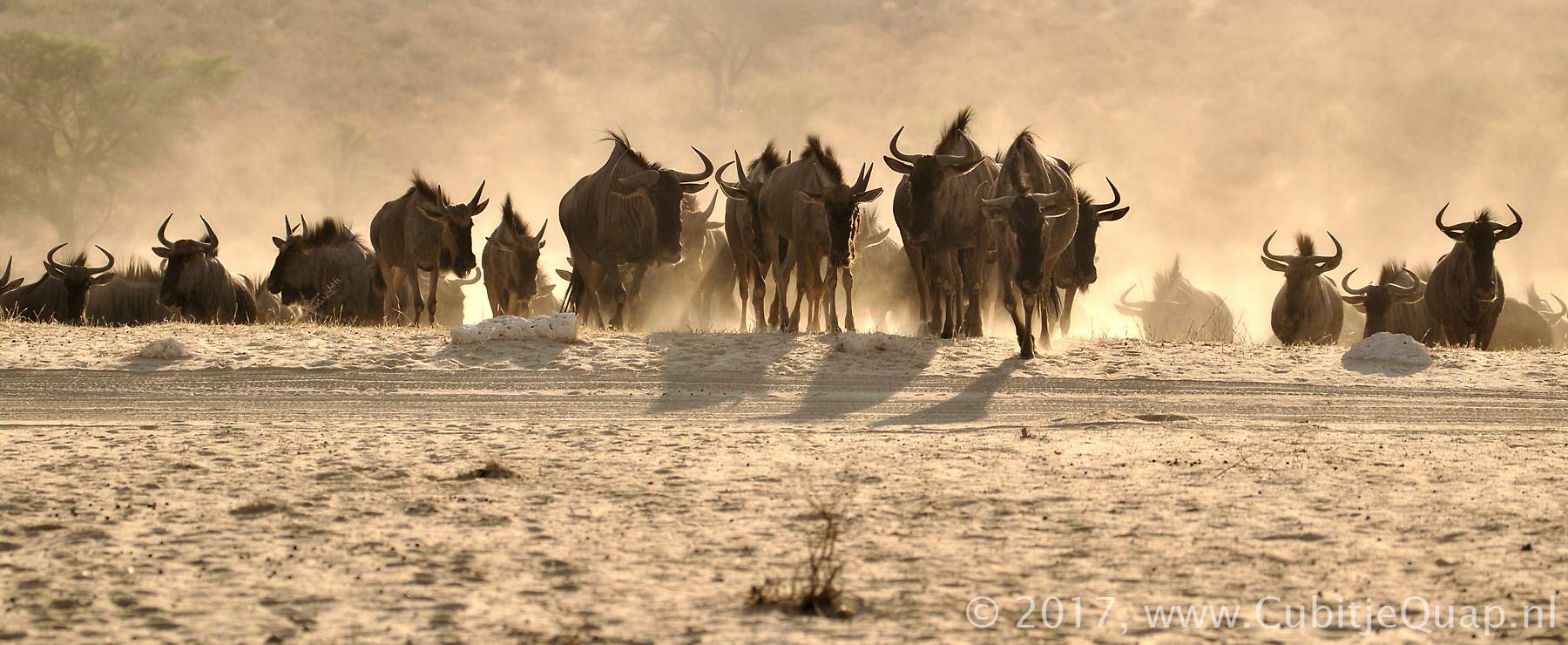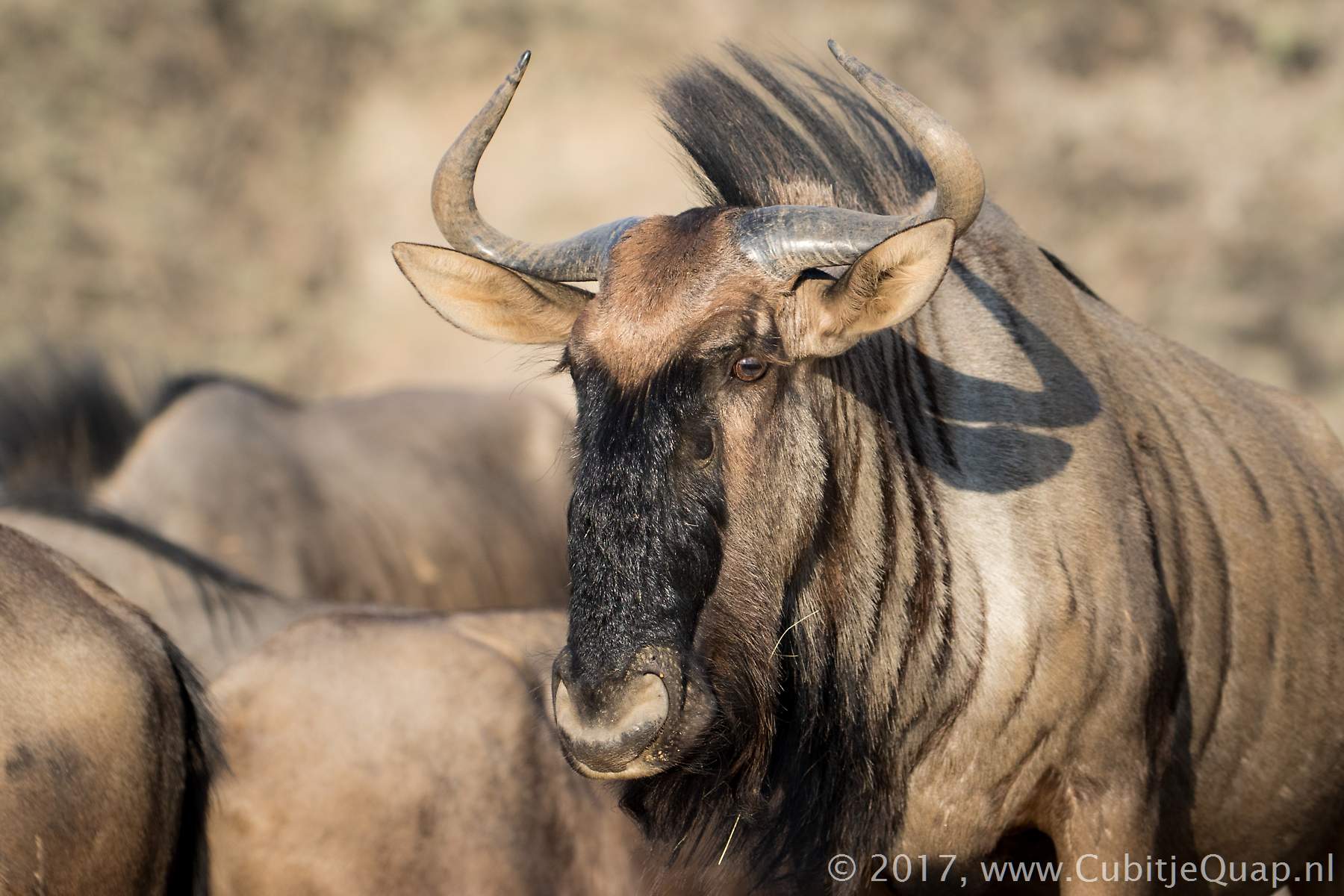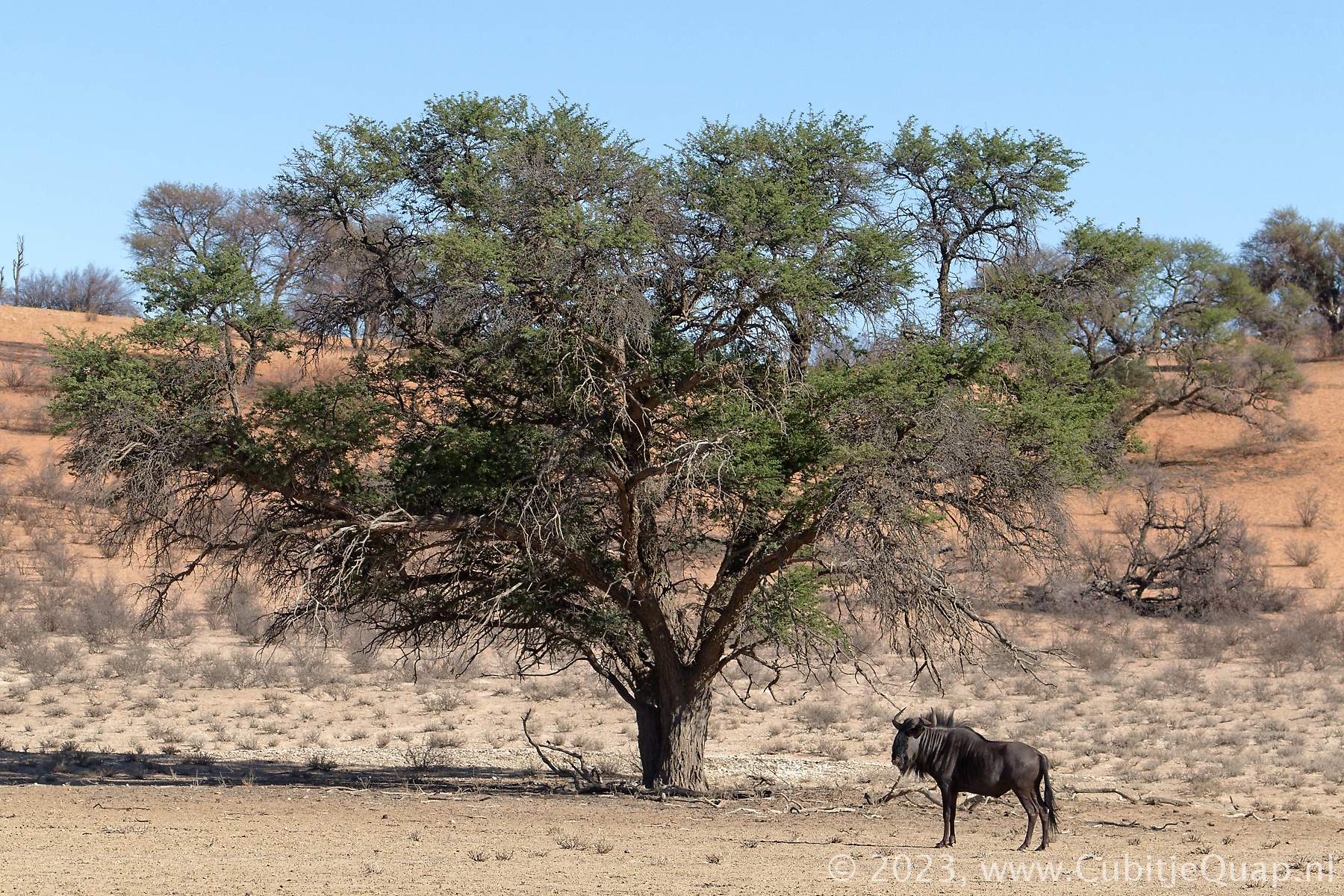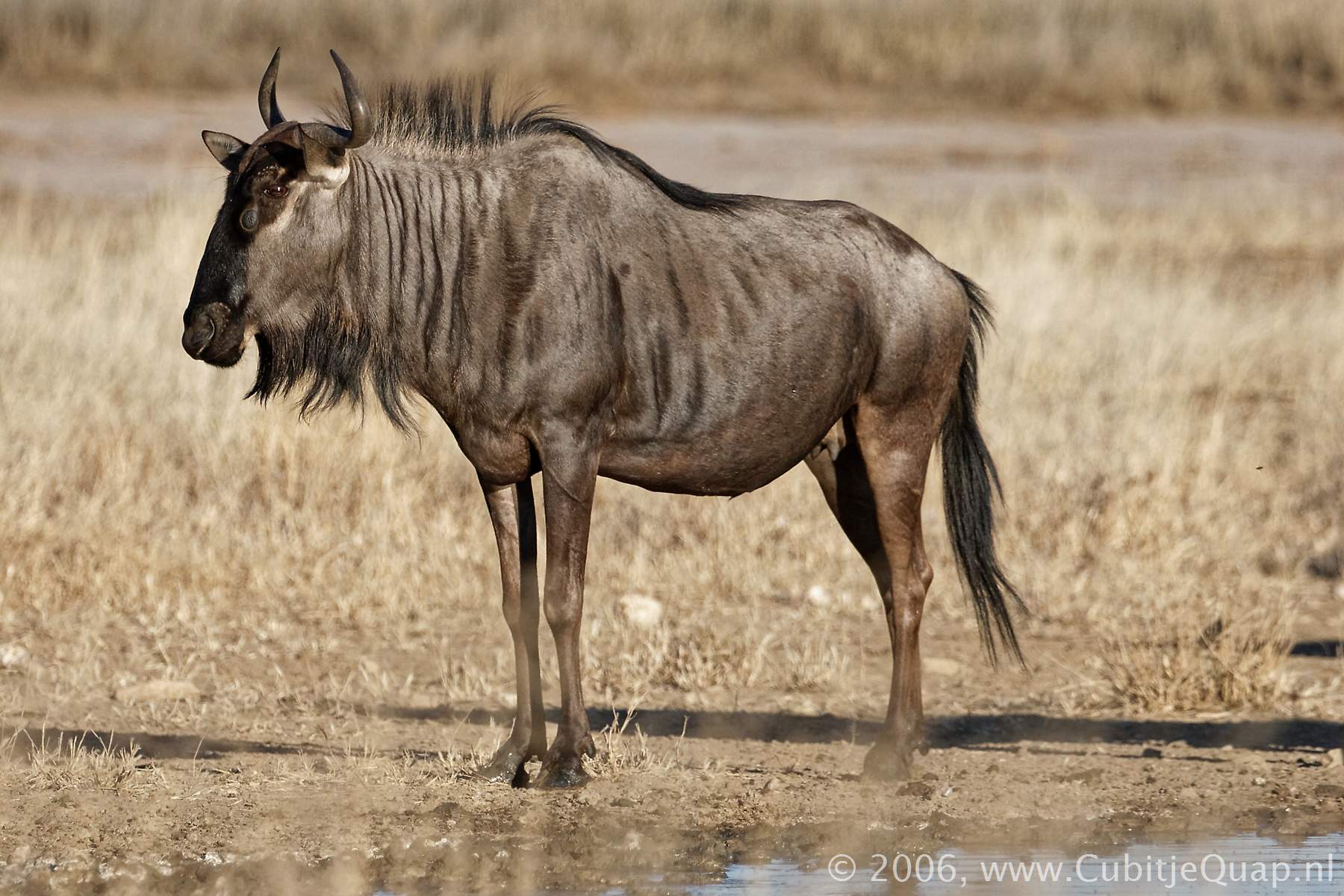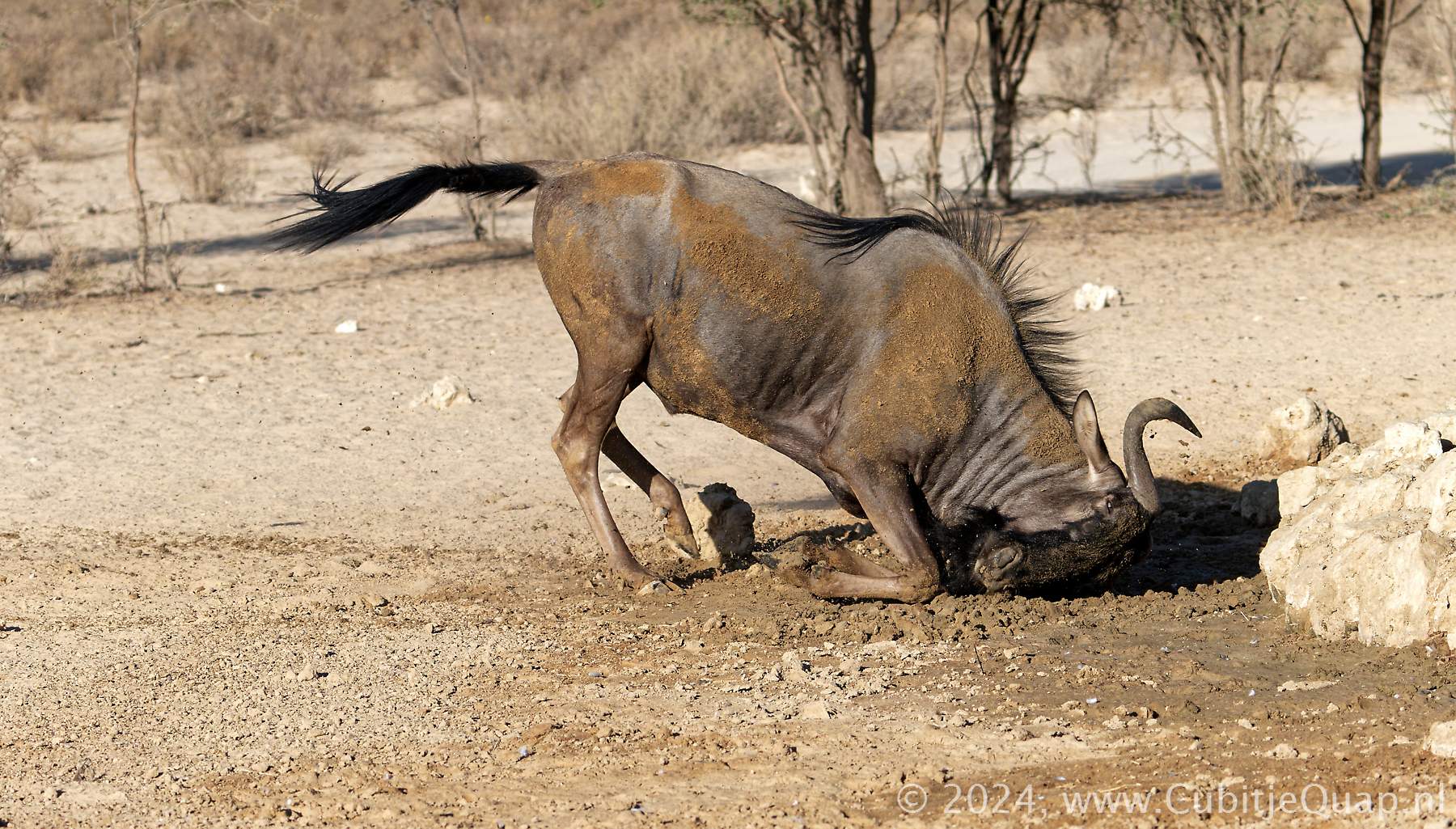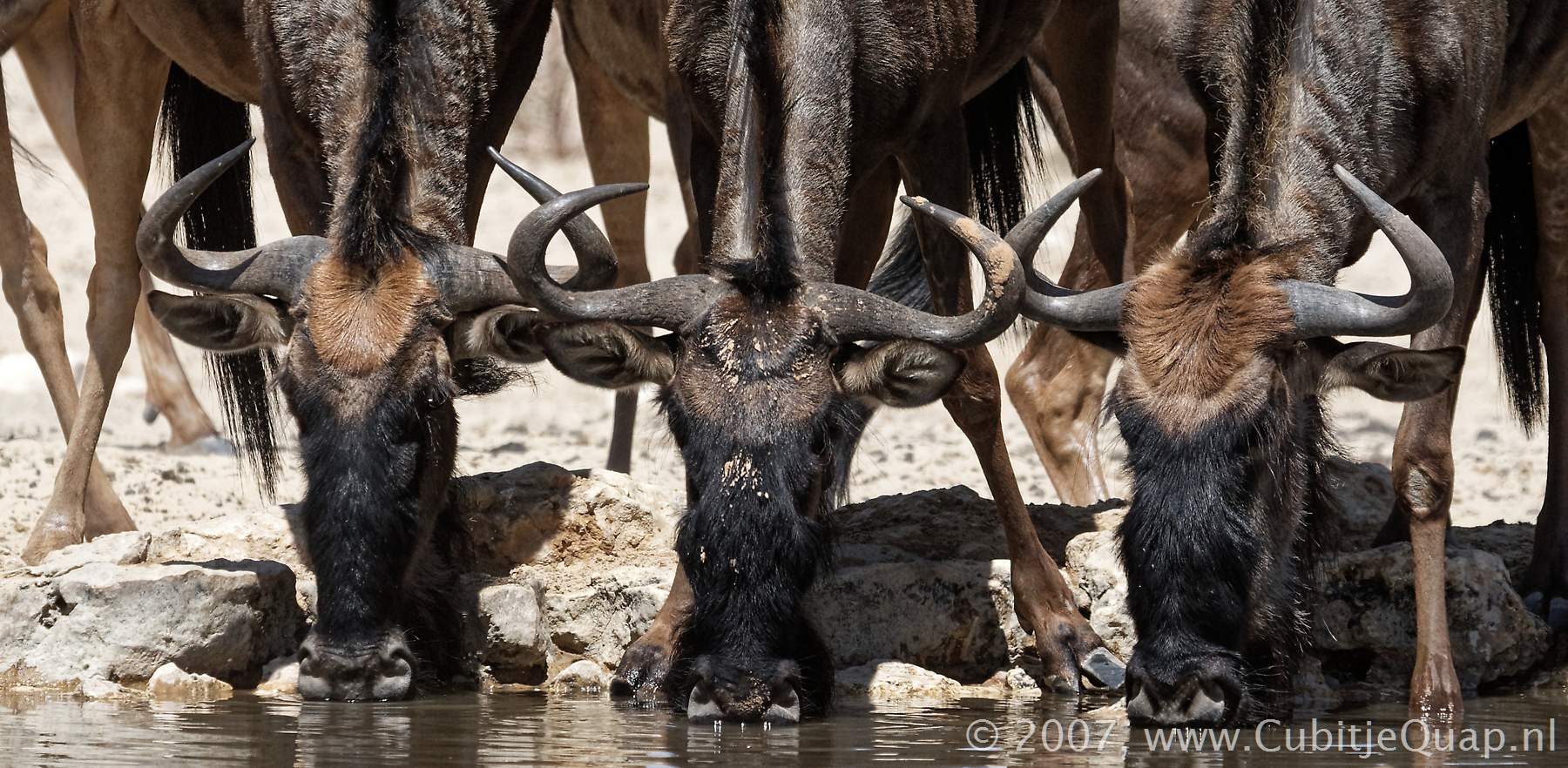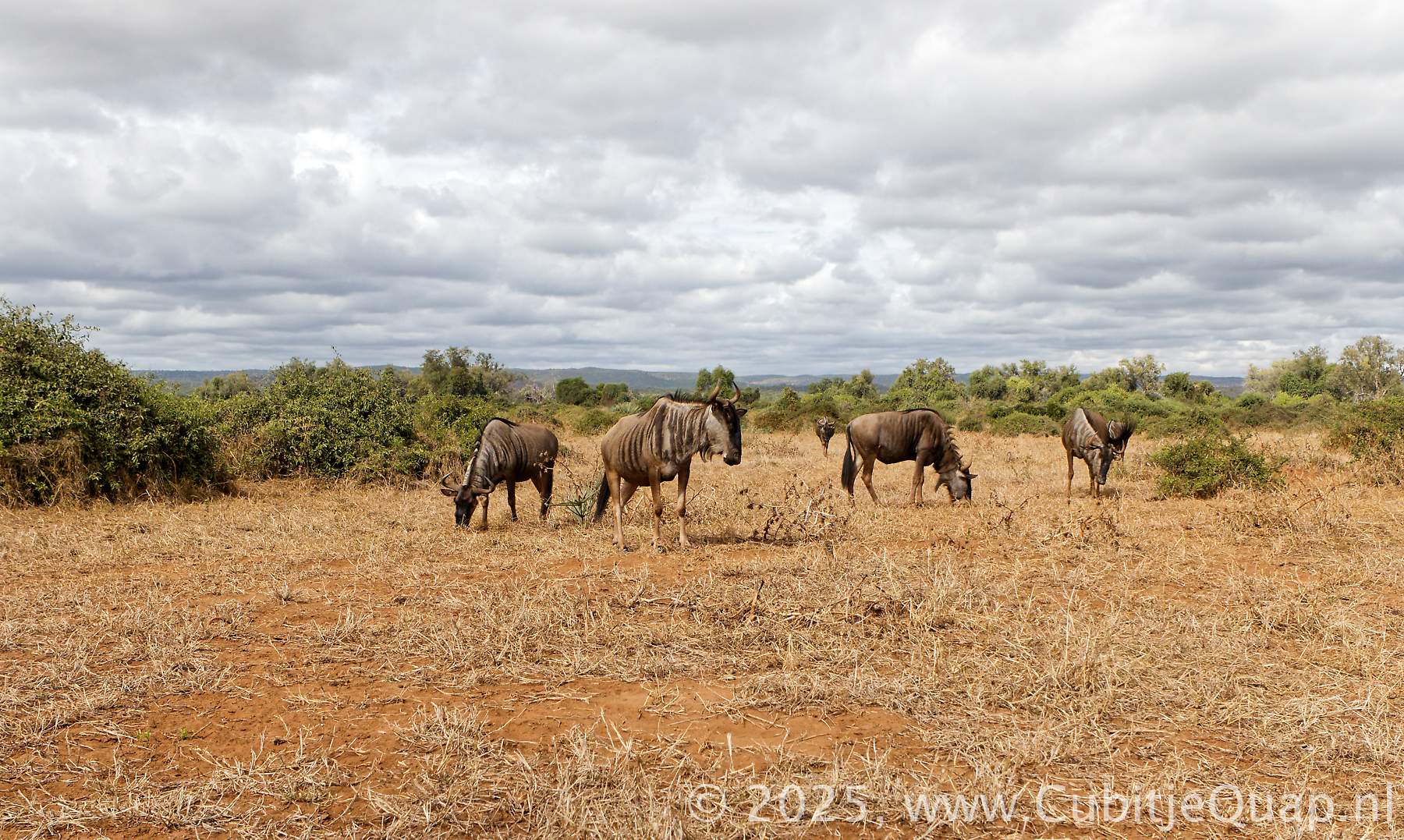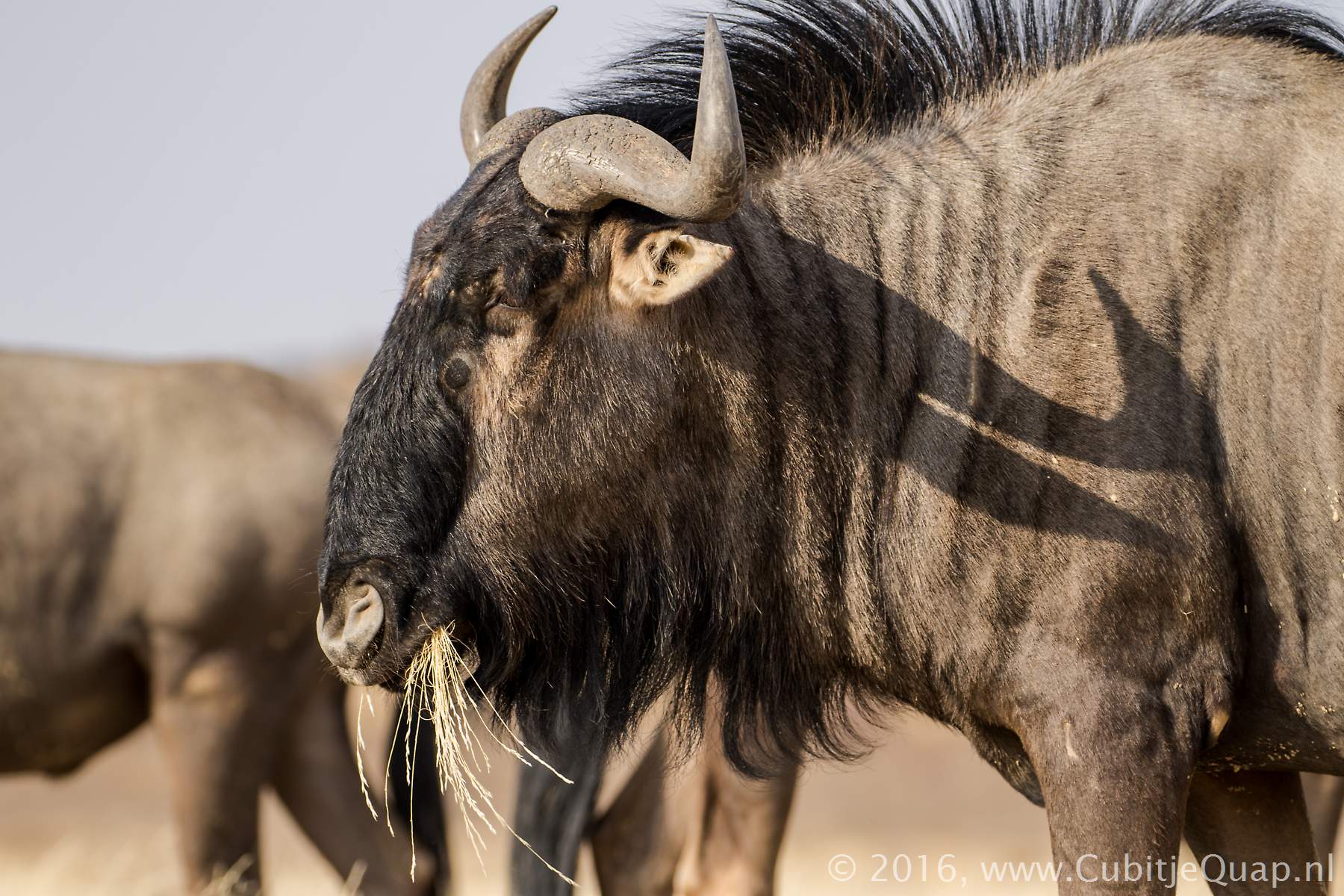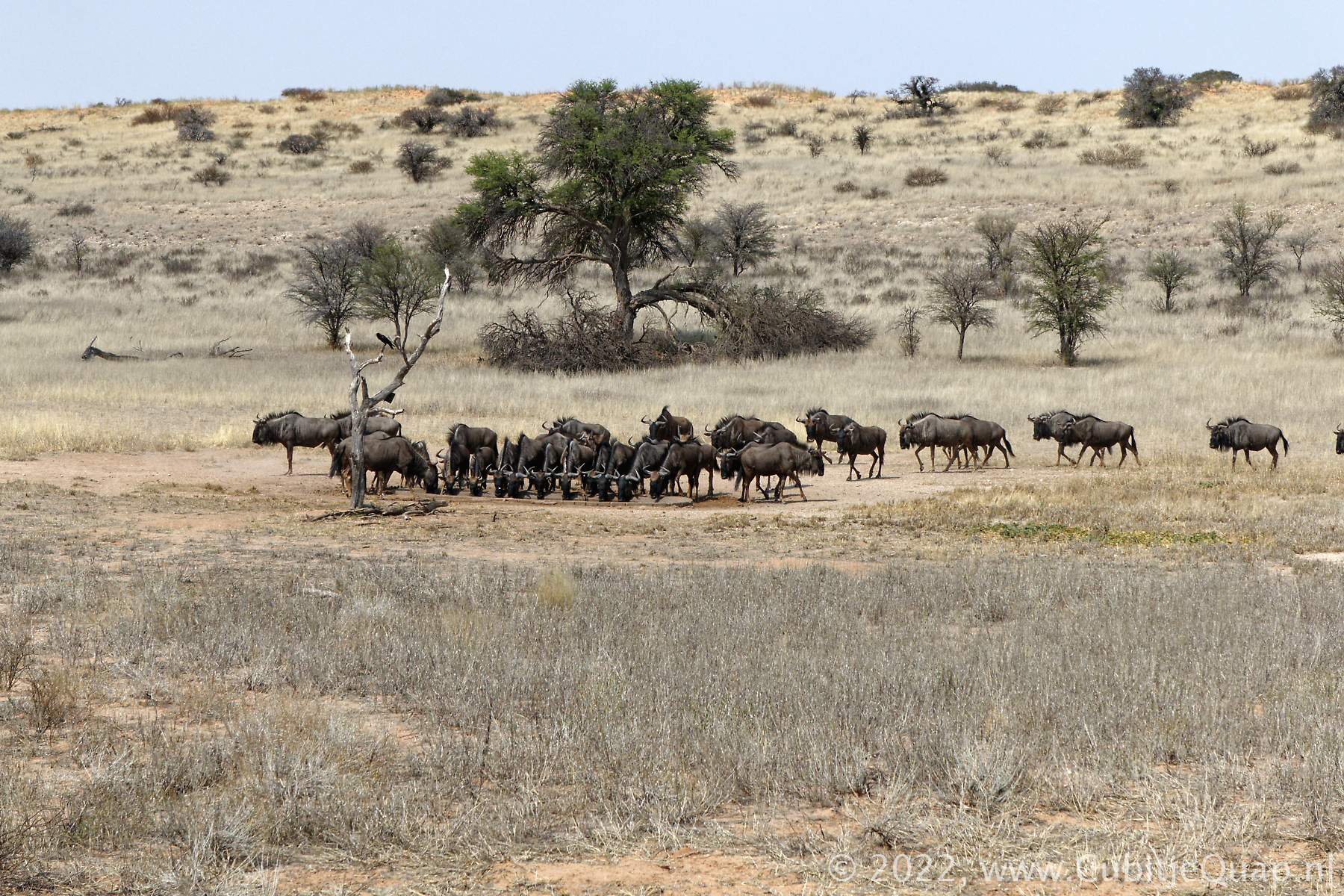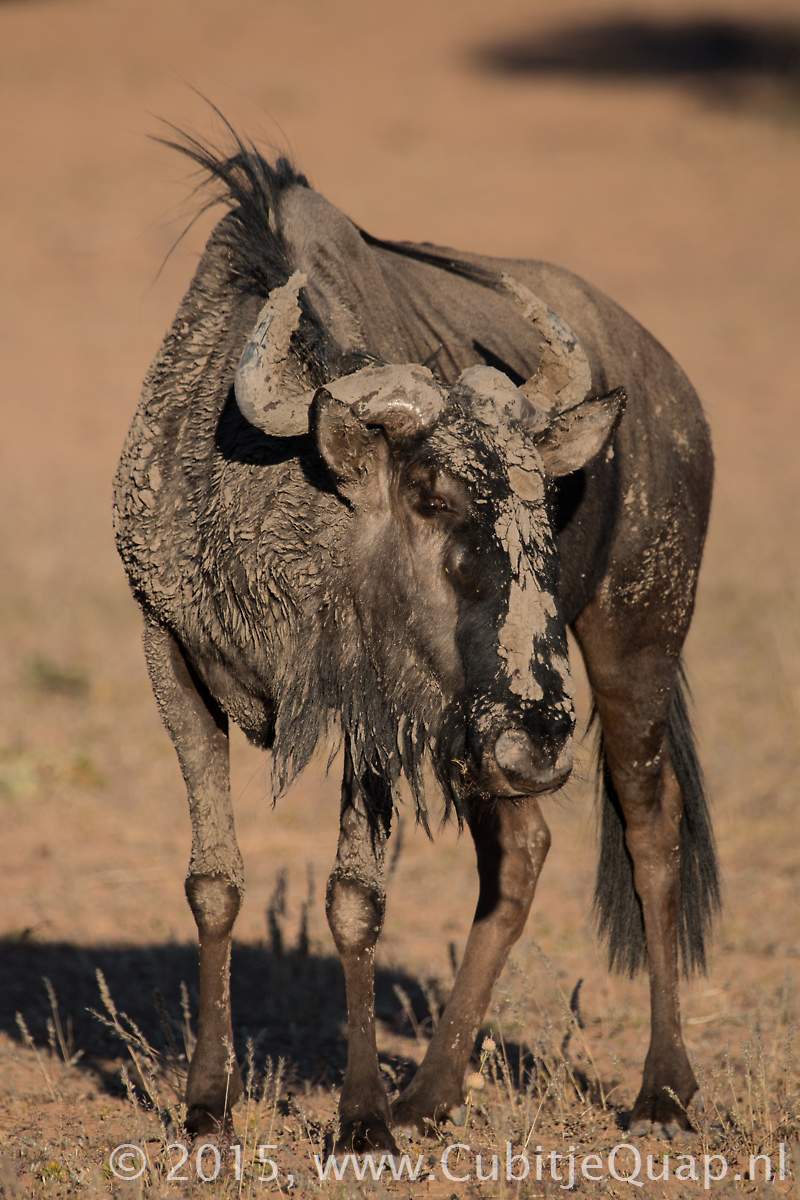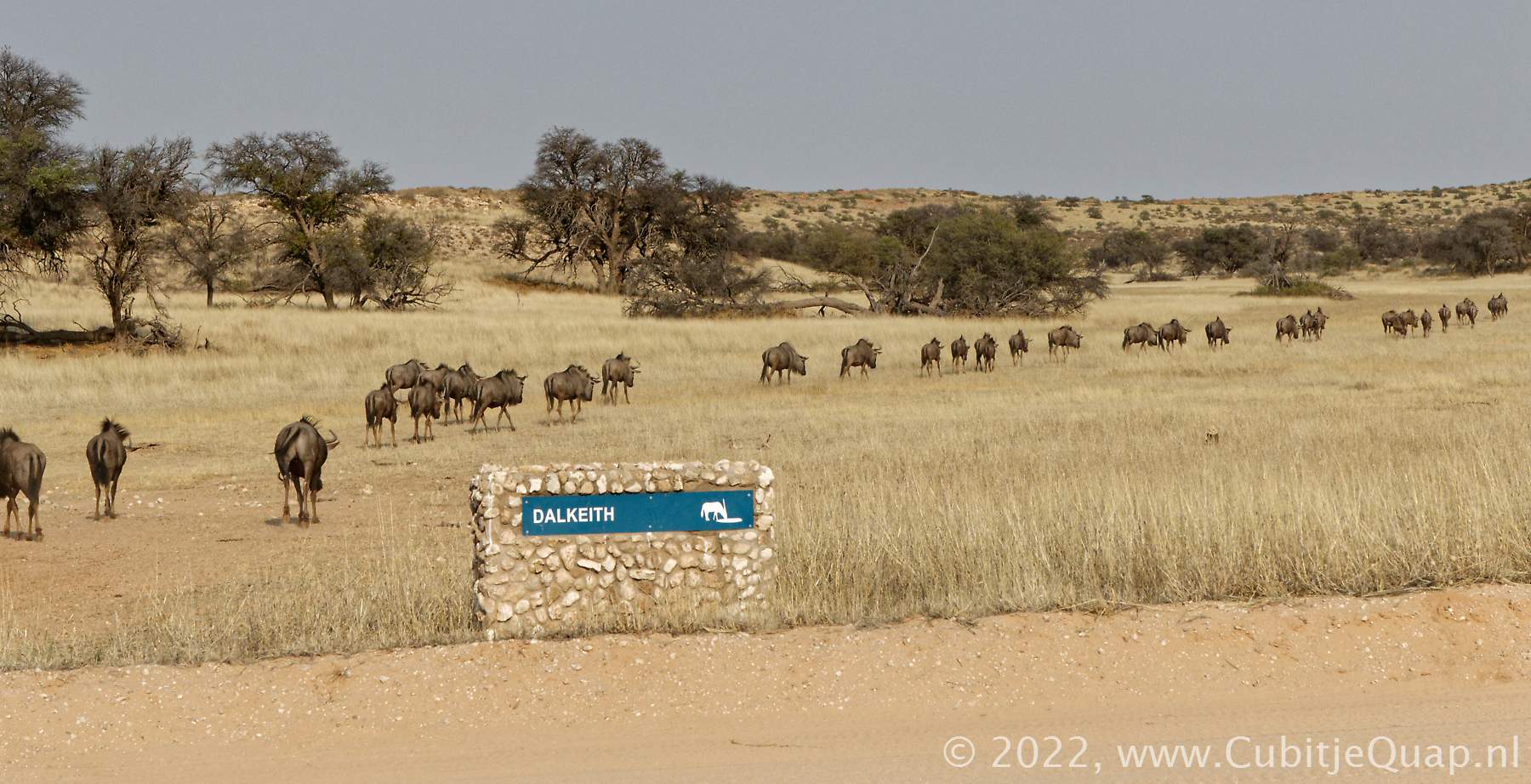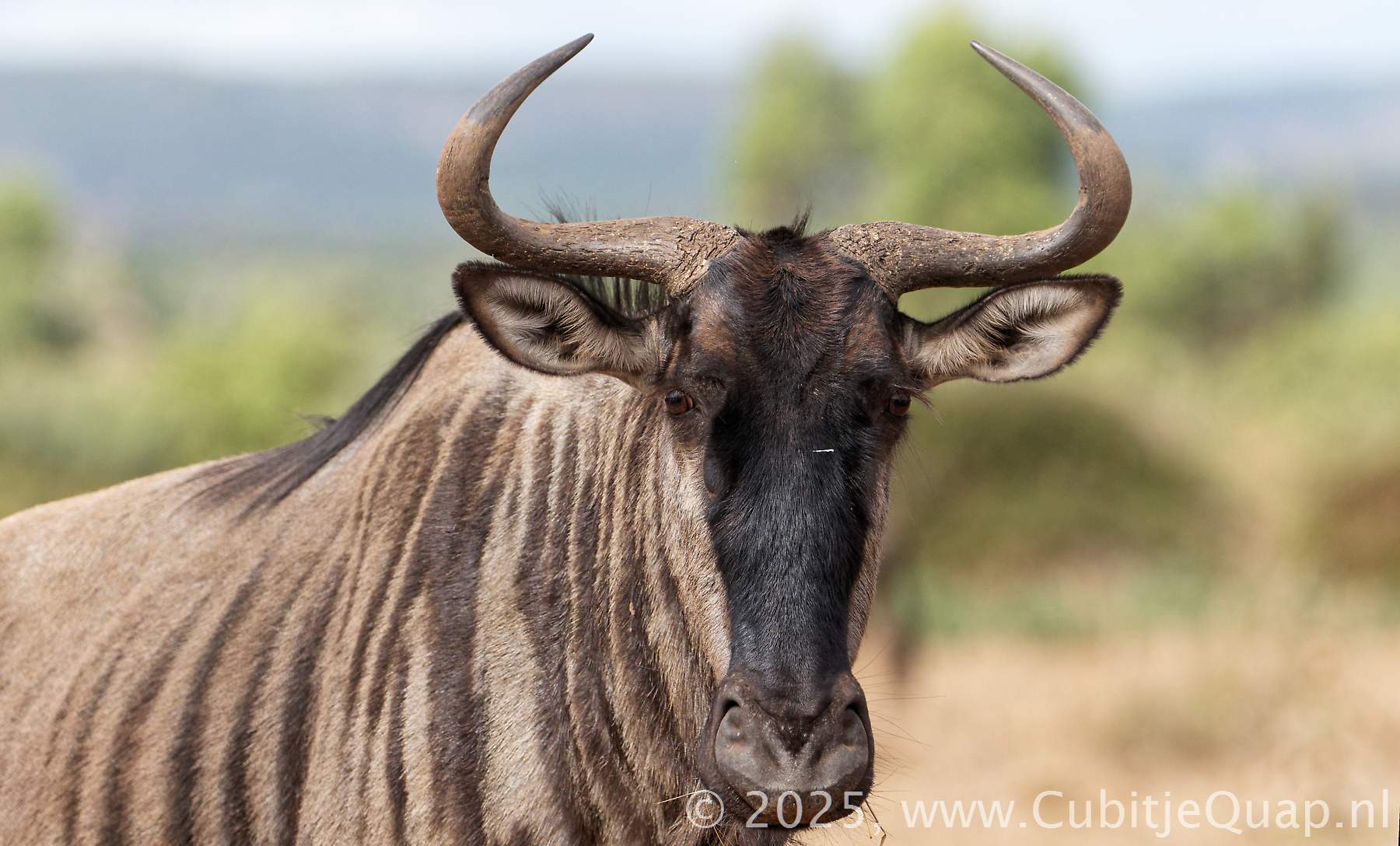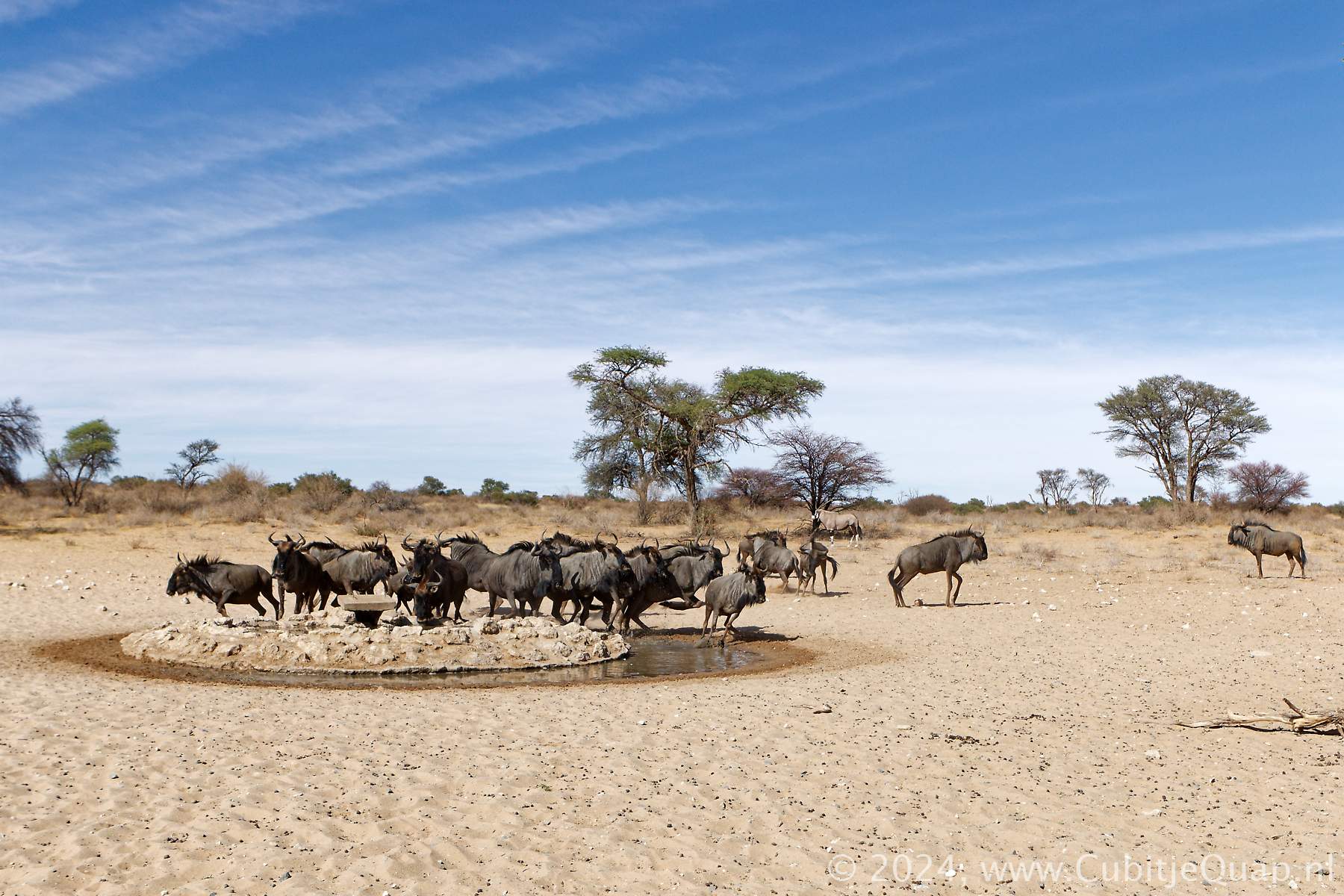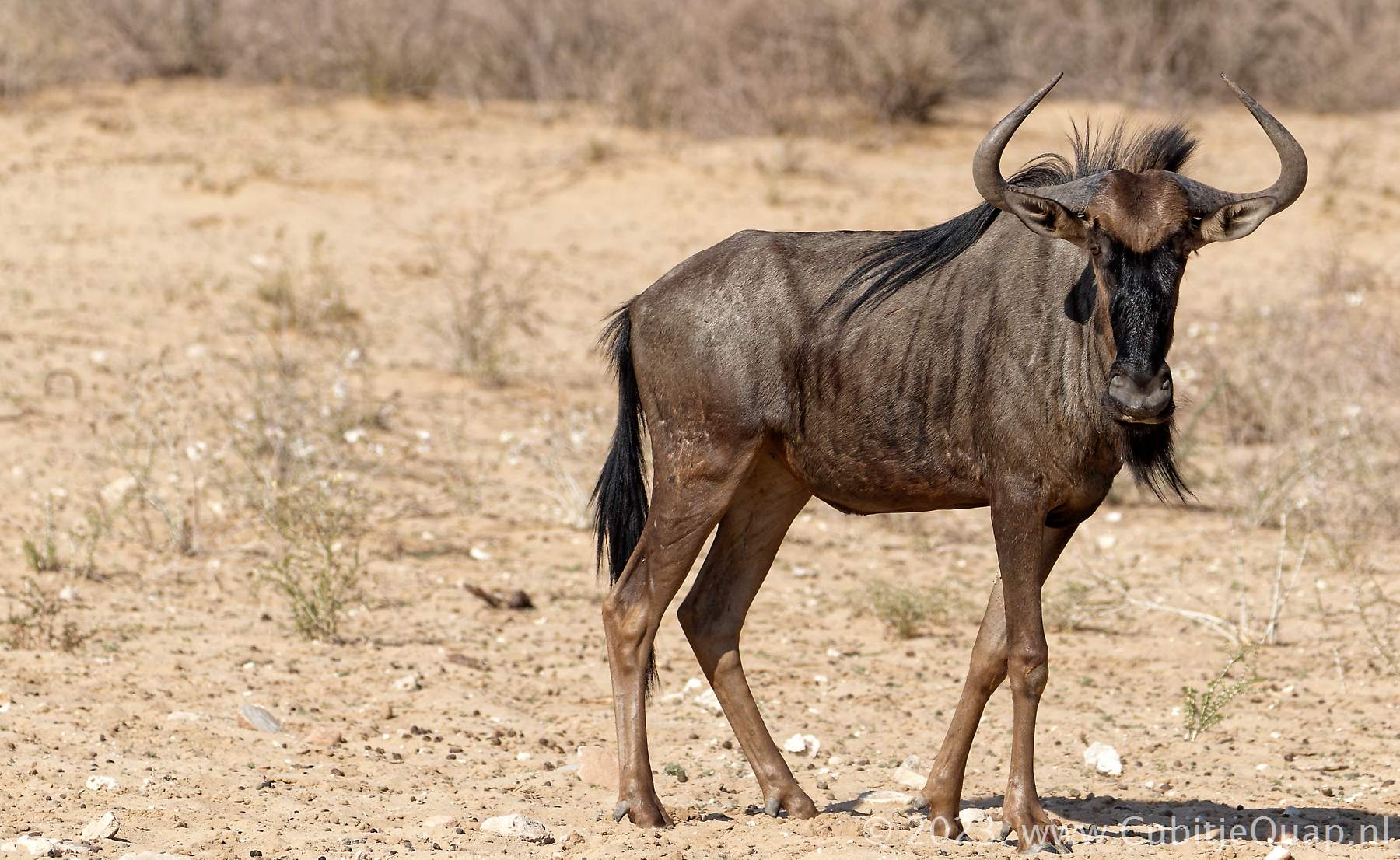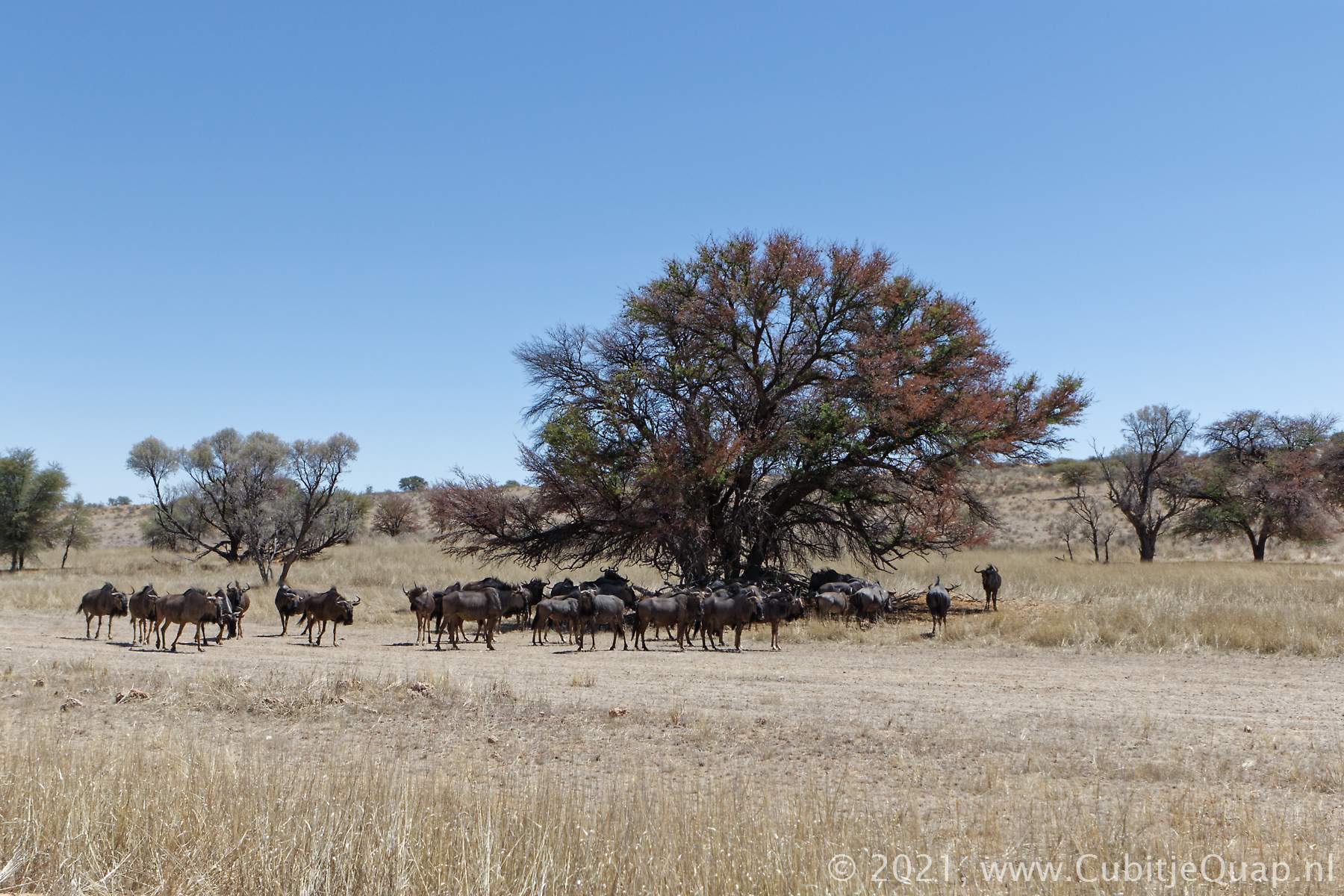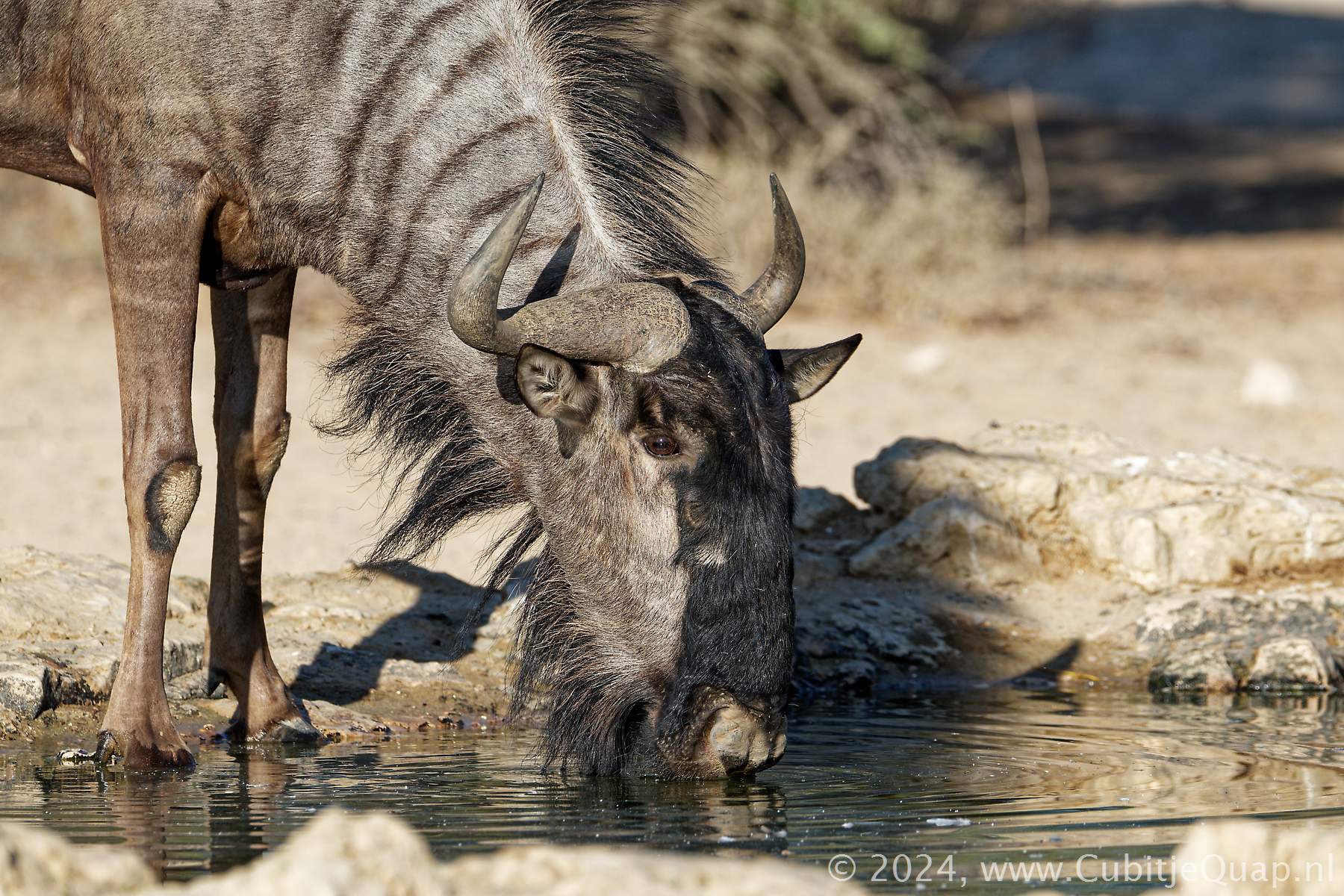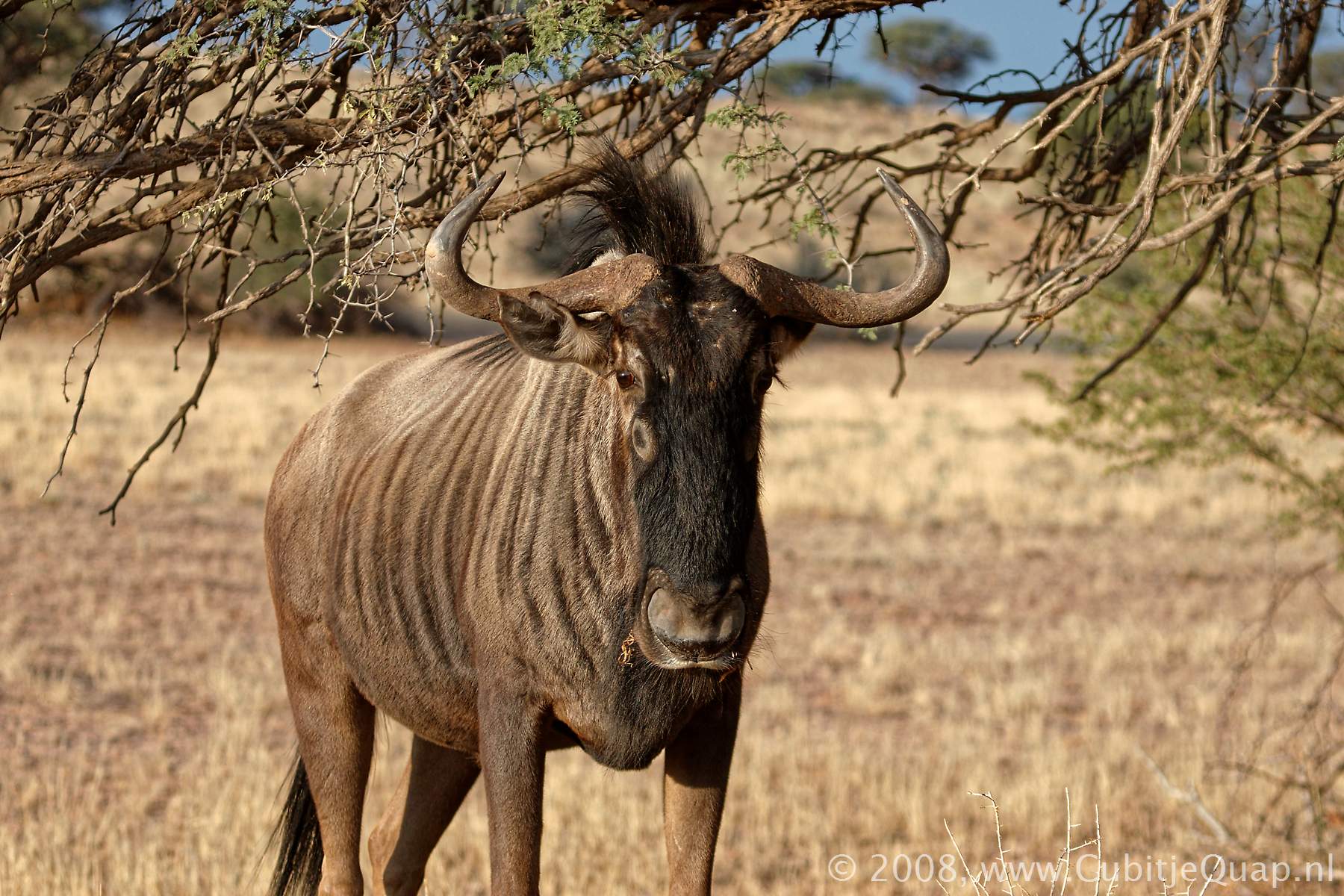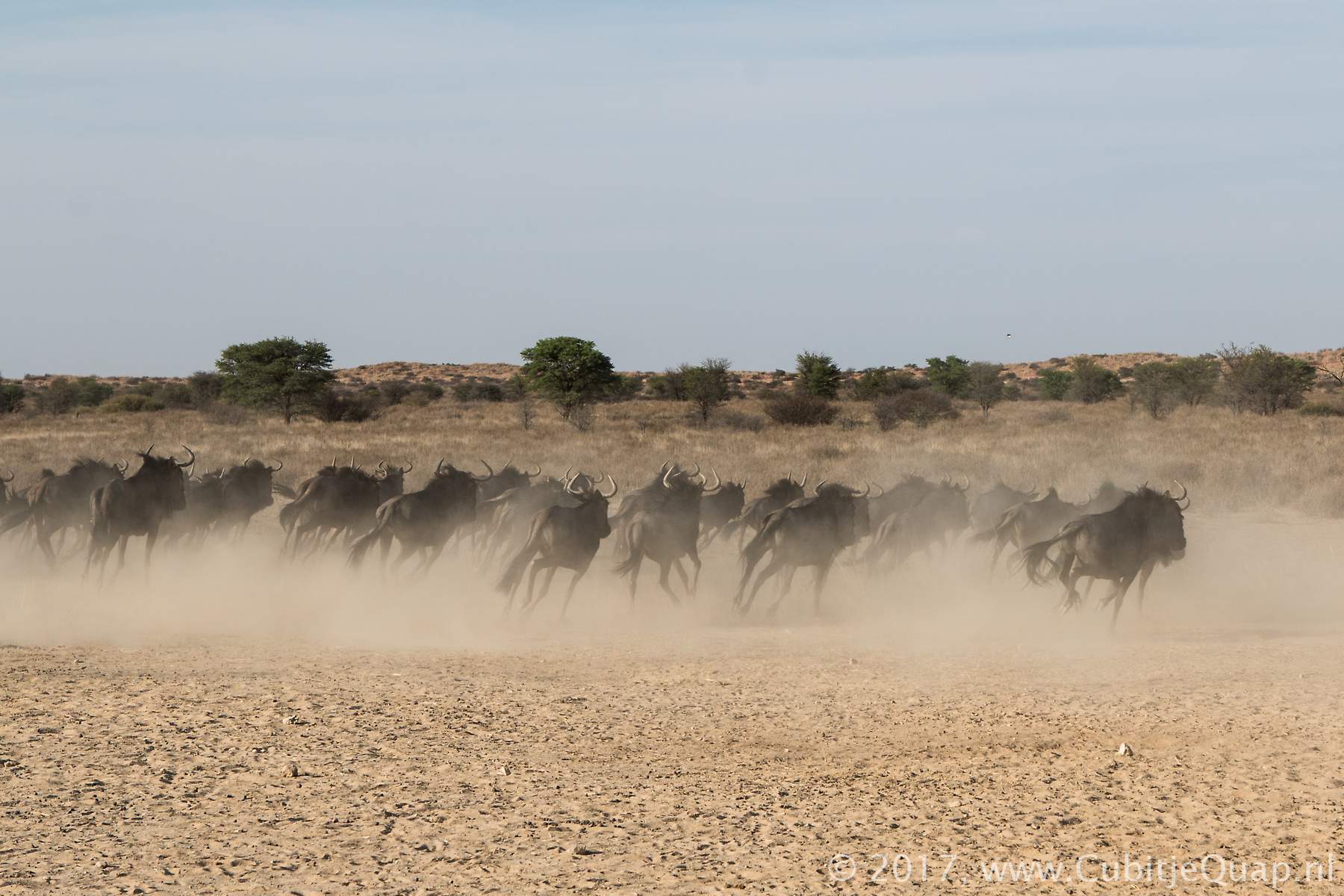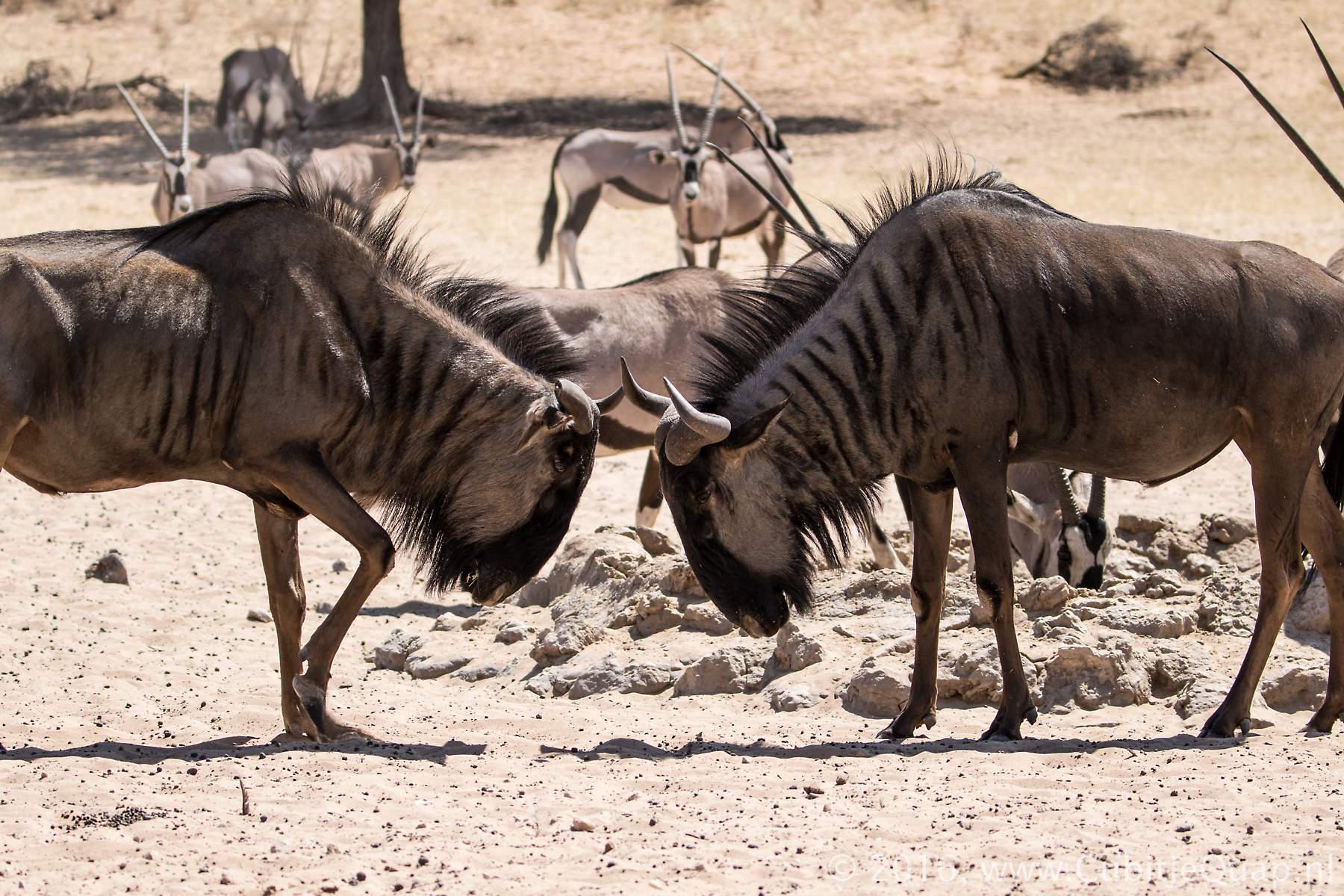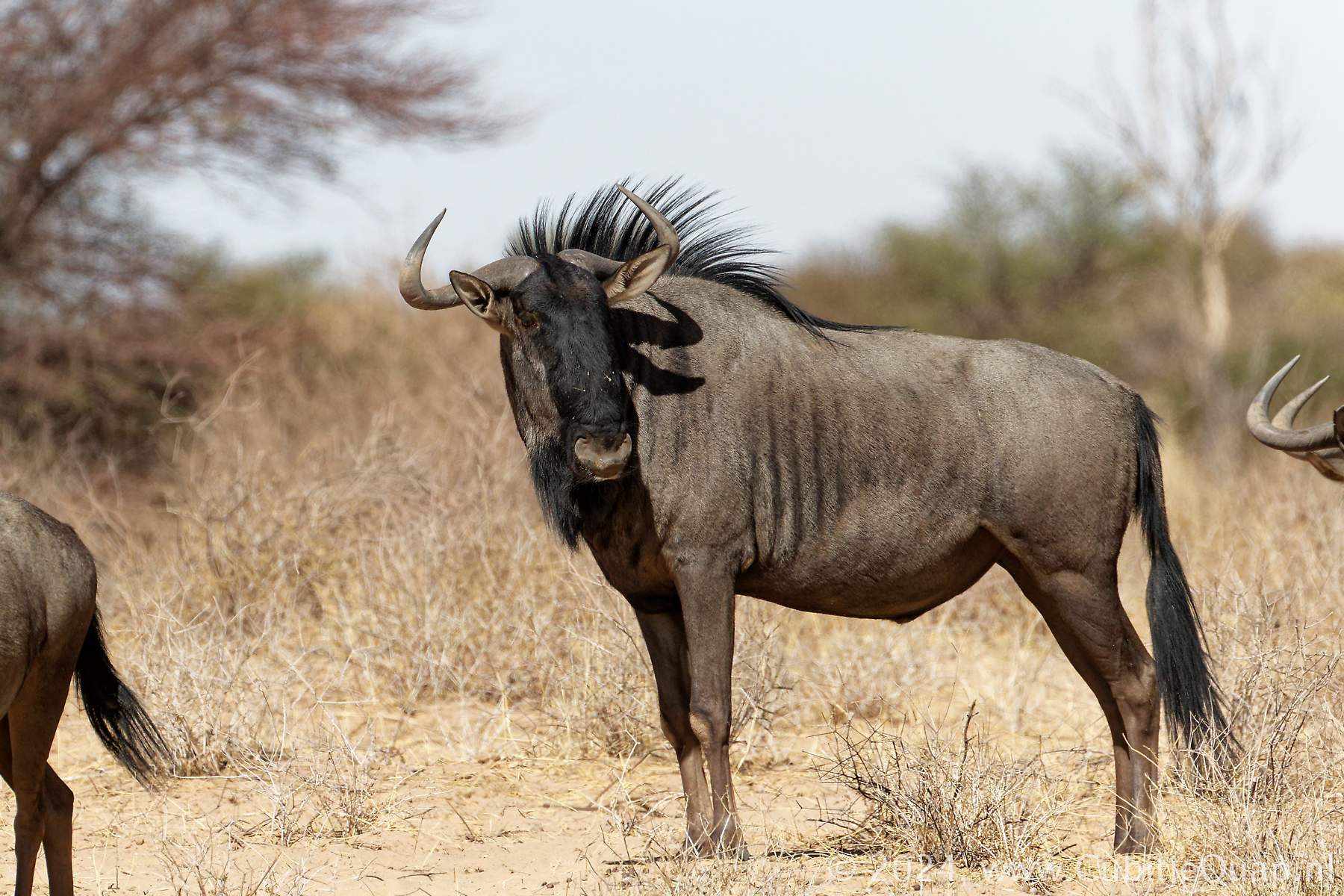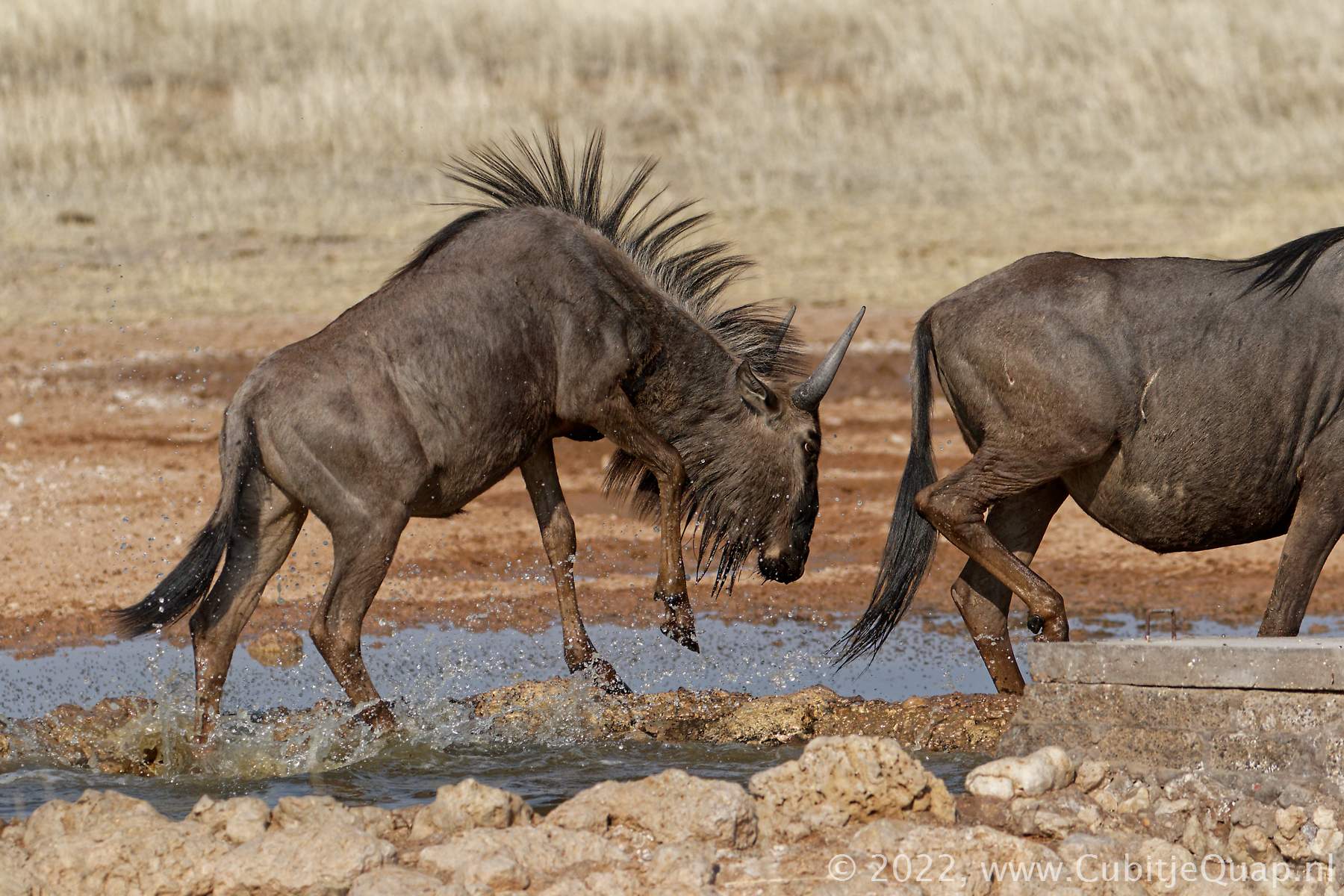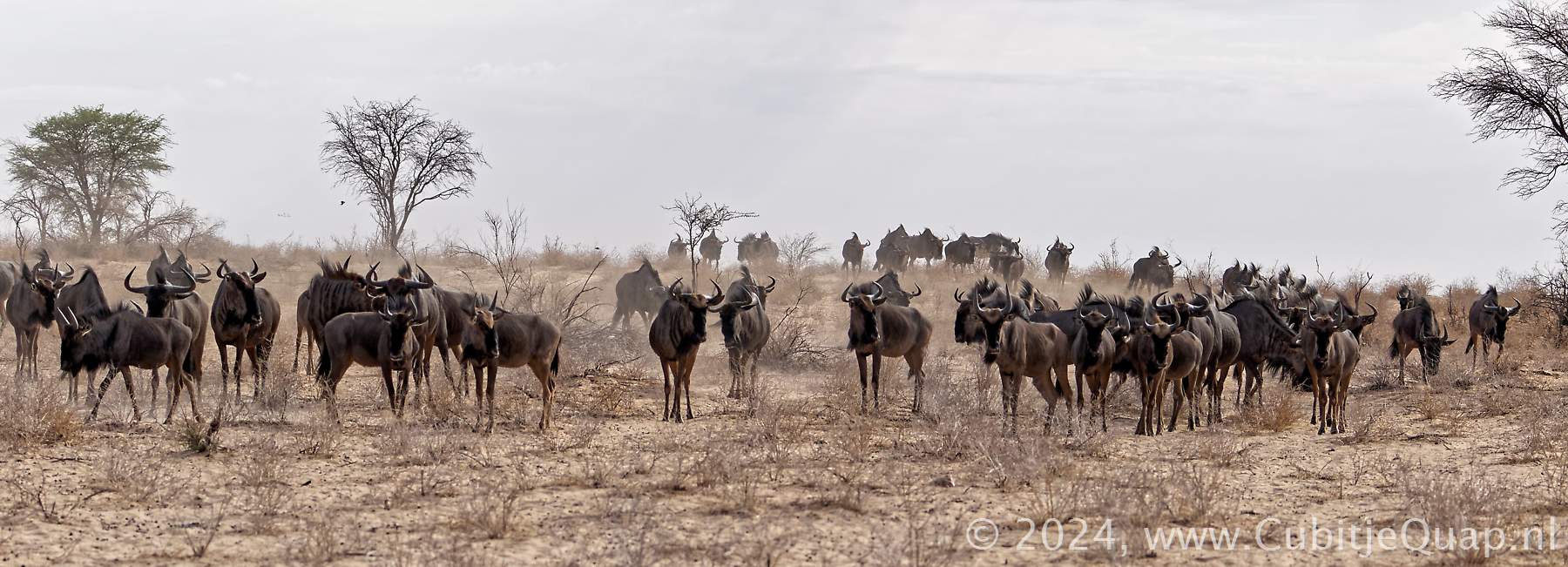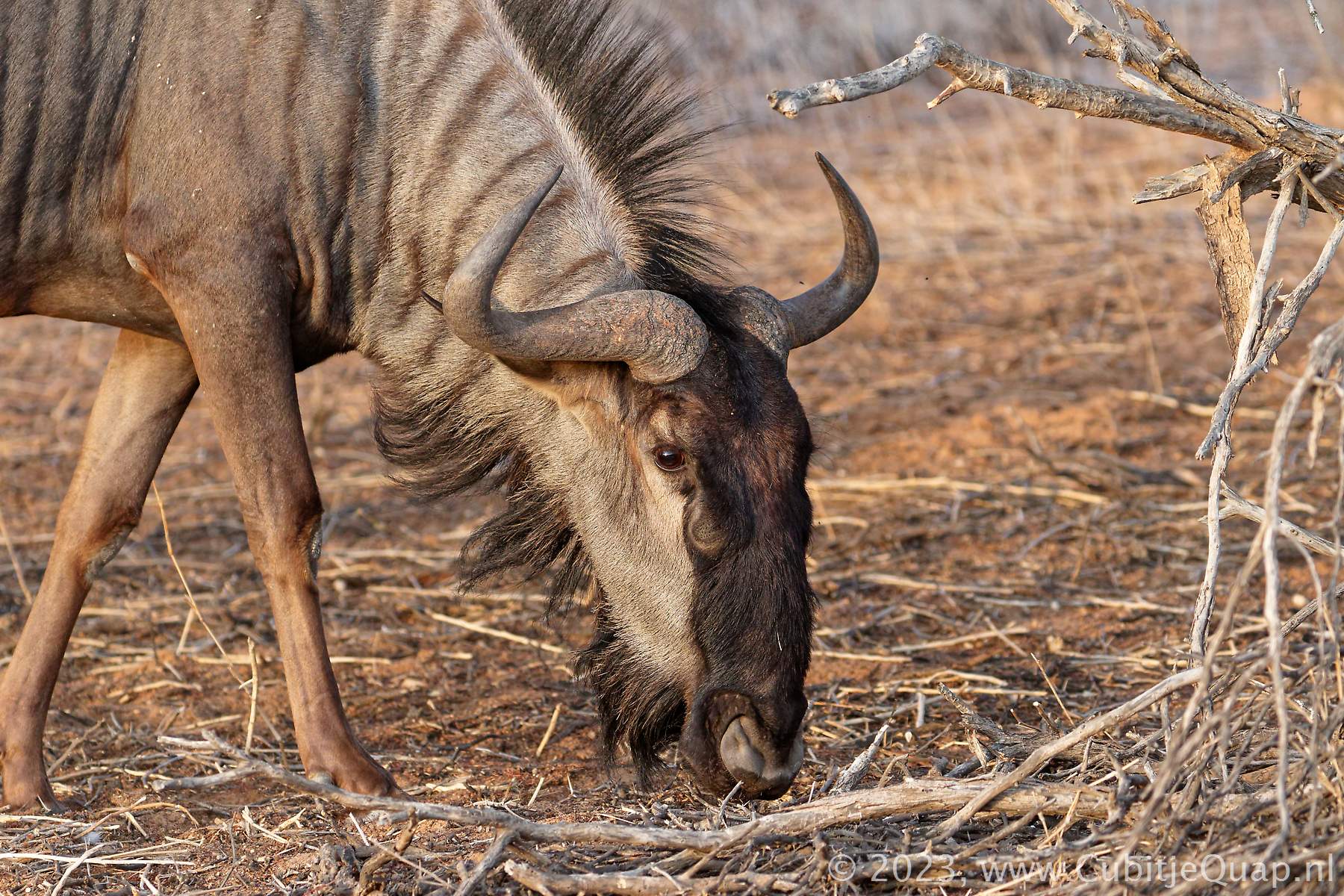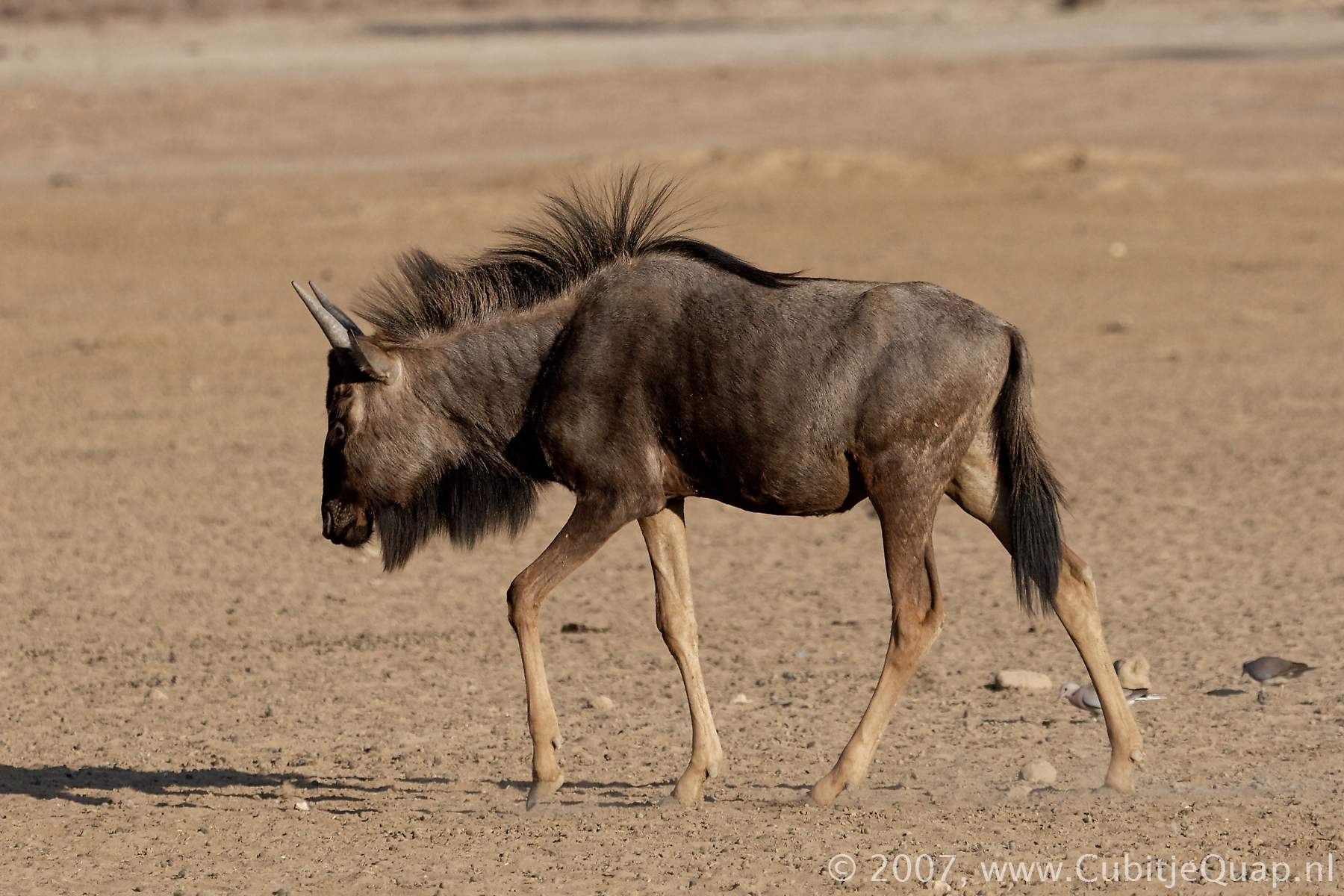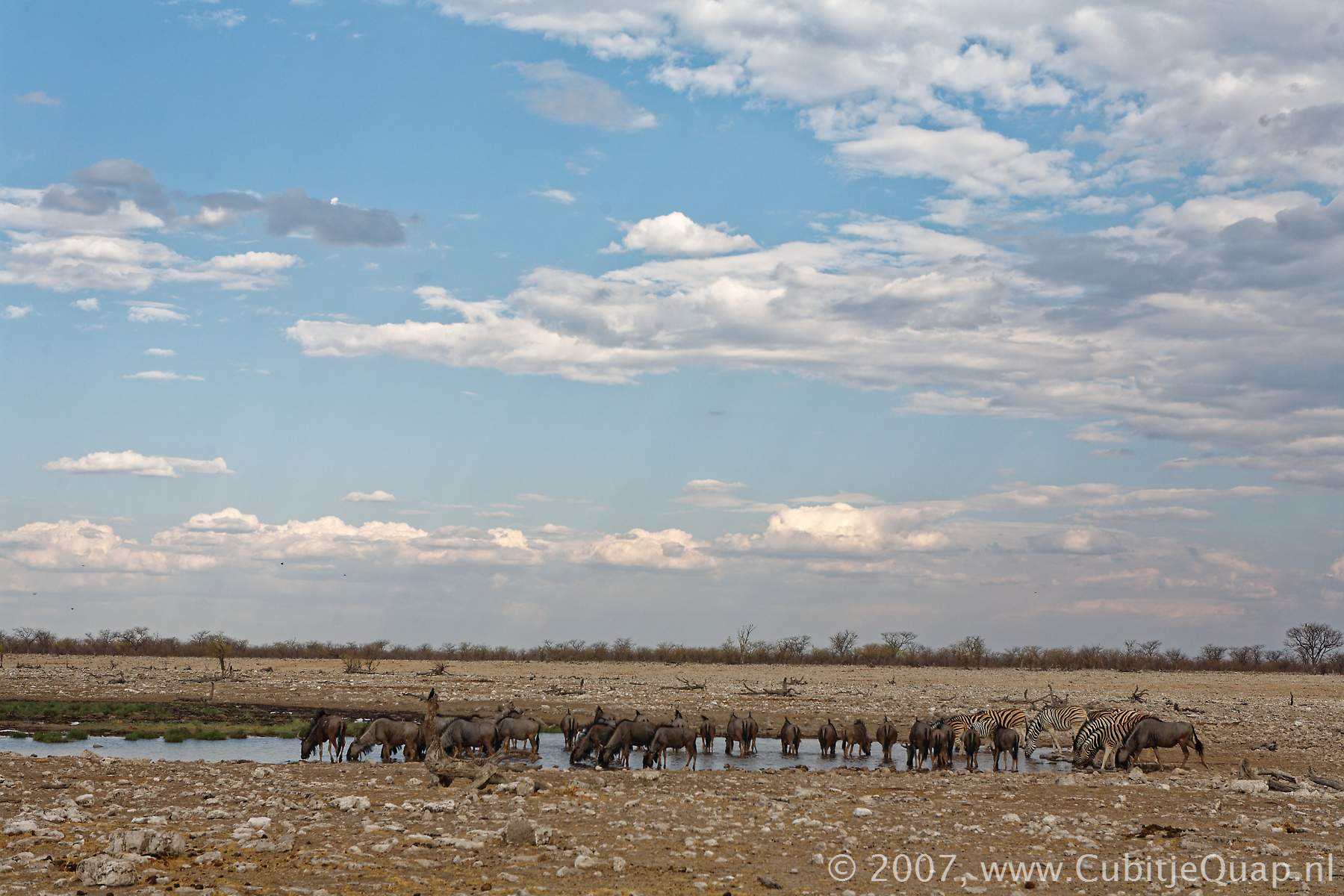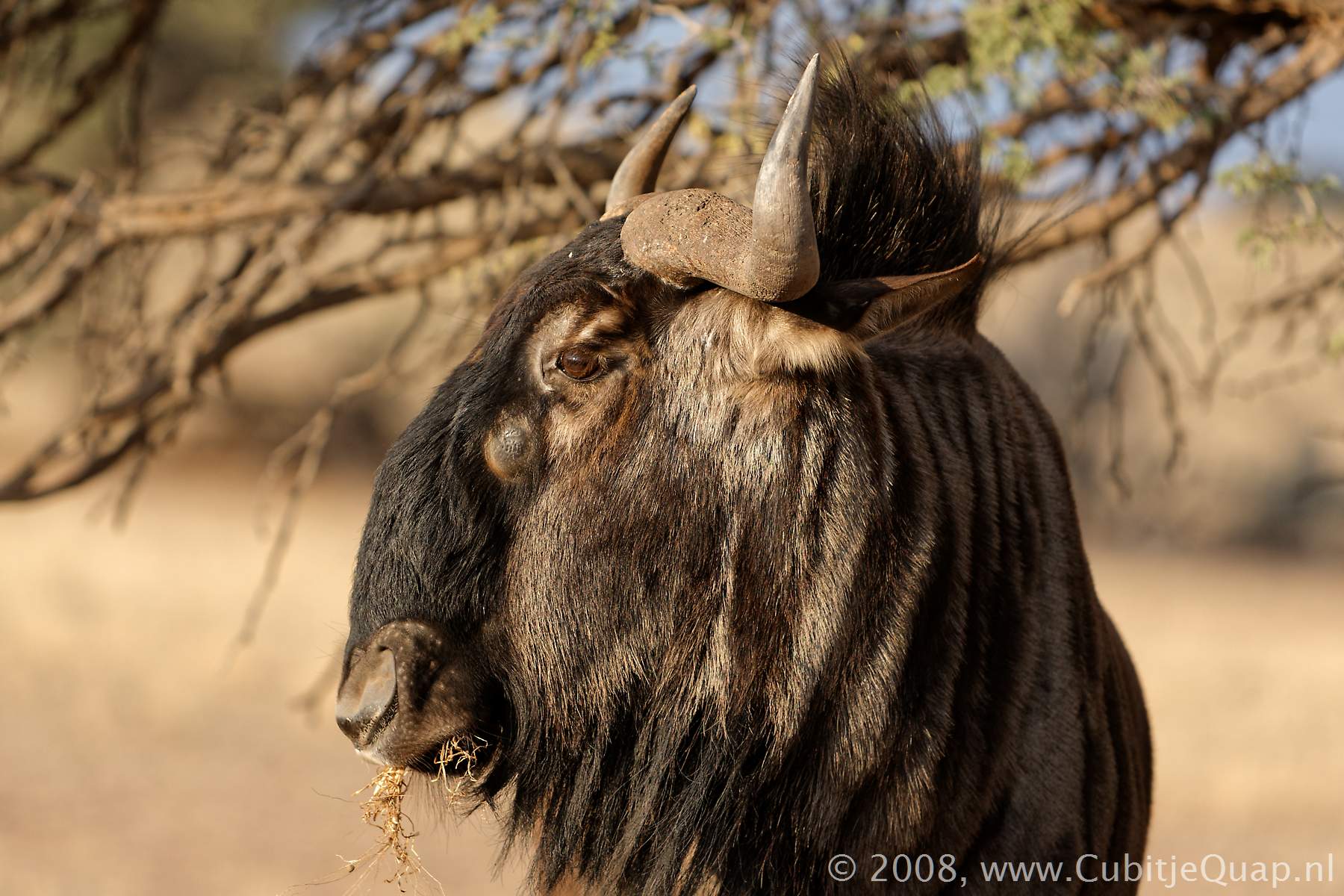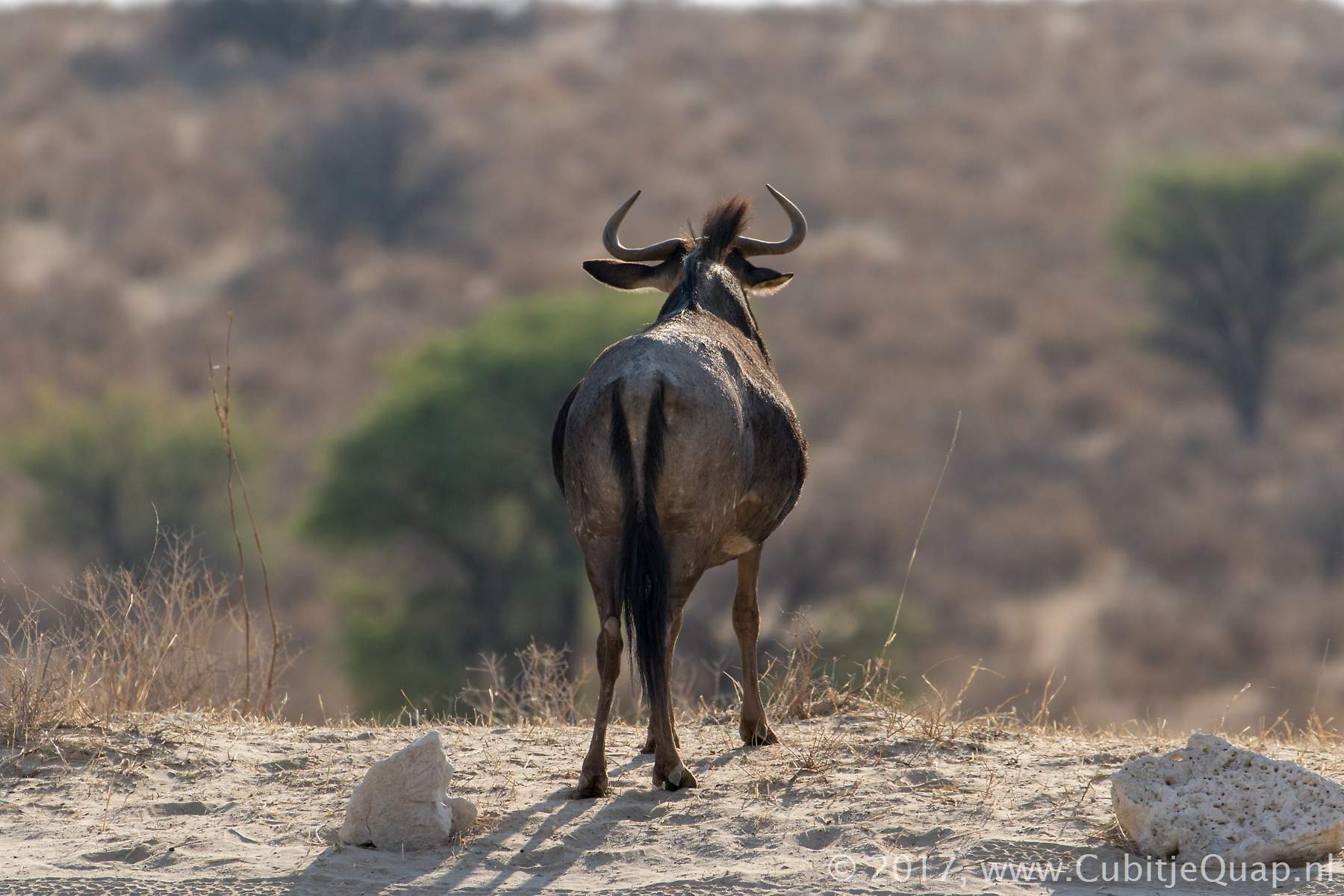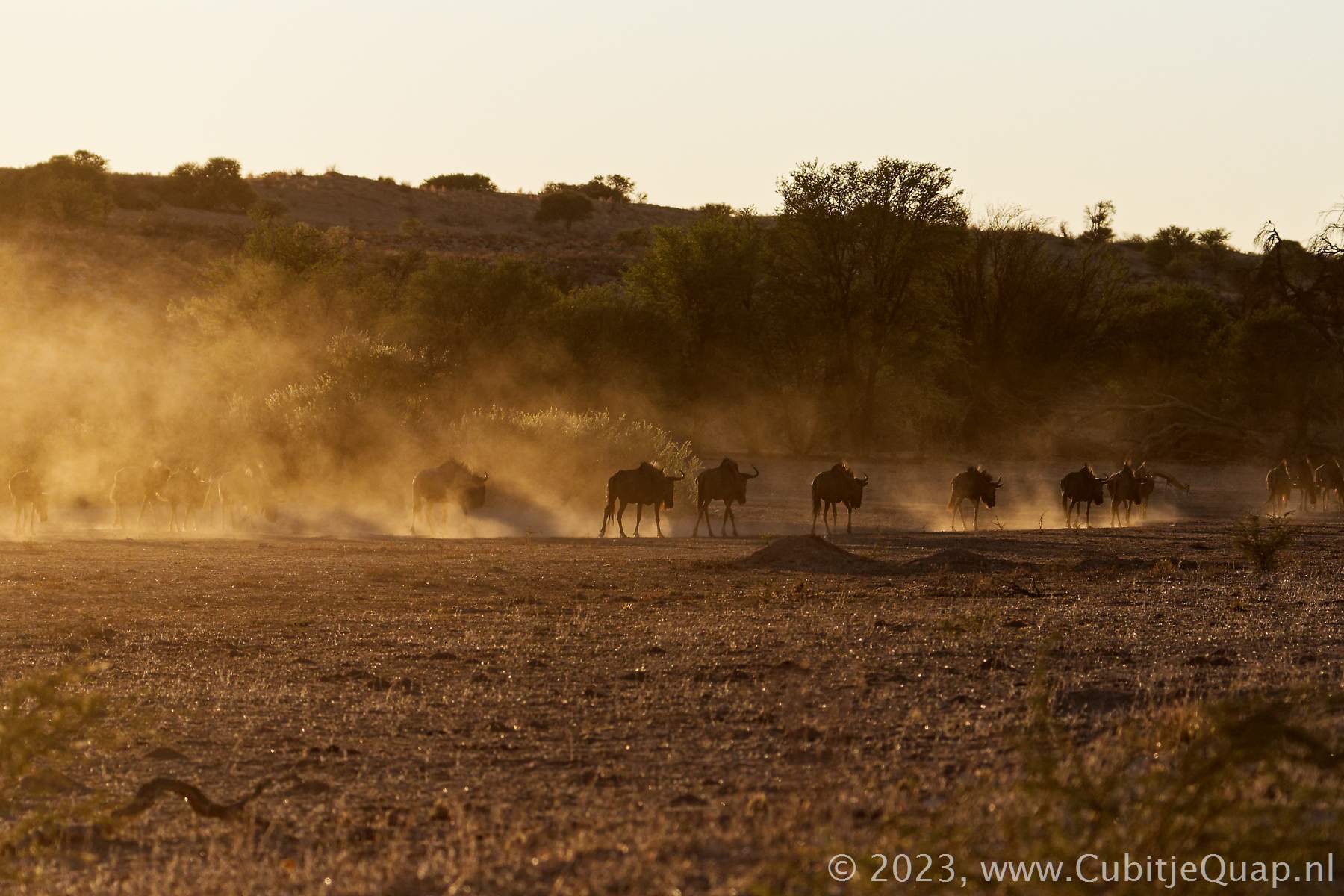Blue wildebeest
Appearance
Bull: Shoulder height 150 cm; tail 60 cm; mass 250 kg; average horn length 60 cm
Cow: Shoulder height 130 cm; tail 60 cm; mass 180 kg; average horn length 60 cm
The blue wildebeest has lightly built hindquarters and is more robust at the shoulders. The head is large with a broad snout. Adult animals are dark grey tinged with brown, and in certain conditions a silvery sheen is discernible. A number of vertical, darker, stripes are present from the neck to just behind the ribcage. It is frequently referred to as the Brindled (brown-streaked) Gnu for this reason. There is a mane of long black hair down the back of the neck and a beard of black hair on the throat. The front of the face is almost black, although an area of brown hair may be present at the horn base, particularly in younger animals. The calf is rufous fawn with a darker face and has a dark vertebral stripe. Both sexes have horns, although those of the cow are less robust. The horn bases form a boss over the top of the head and the horns themselves grow outwards, turn sharply up and then inwards. The tail is black and horse-like.
Habitat
It shows a preference for open savanna woodland and open grassland. Access to drinking water is essential.
Behaviour
Although Blue wildebeest occur in herds of ususally up to 30 individuals, much larger concentrations may be observed, numbering many thousands. These large concentrations are formed during migrations to new feeding grounds but the smaller herd units maintain their identity. Such mass movements still take place in Botswana but the erection of veterinary cordon fences in that country have disturbed a number of the traditional routes. Territorial bulls defend a zone around their cows, even when on the move. A bull may have between 2 and 150 cows with their young within his territorial control. However, cows may move through the territory of a number of bulls and may mate with more than one. Outside the mating season the cow herds move freely and are not herded by territorial bulls. Bachelor herds are usually found around the edge of the main concentration. Blue wildebeest are active by day but they seek out shade during the hottest hours.
Food
Blue wildebeest are essentially grazers, showing a preference for short green grass.
Interesting links
Wikipedia

